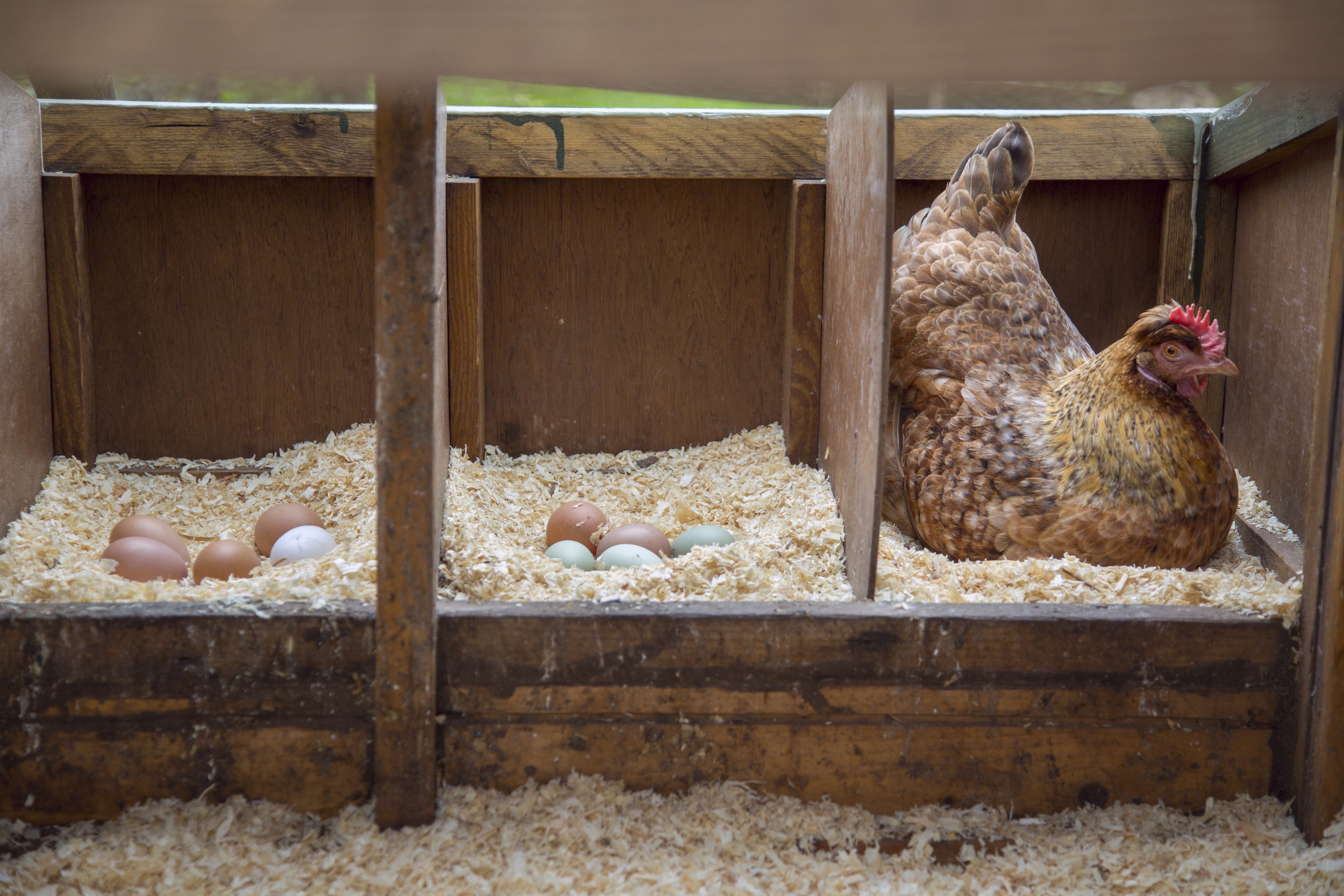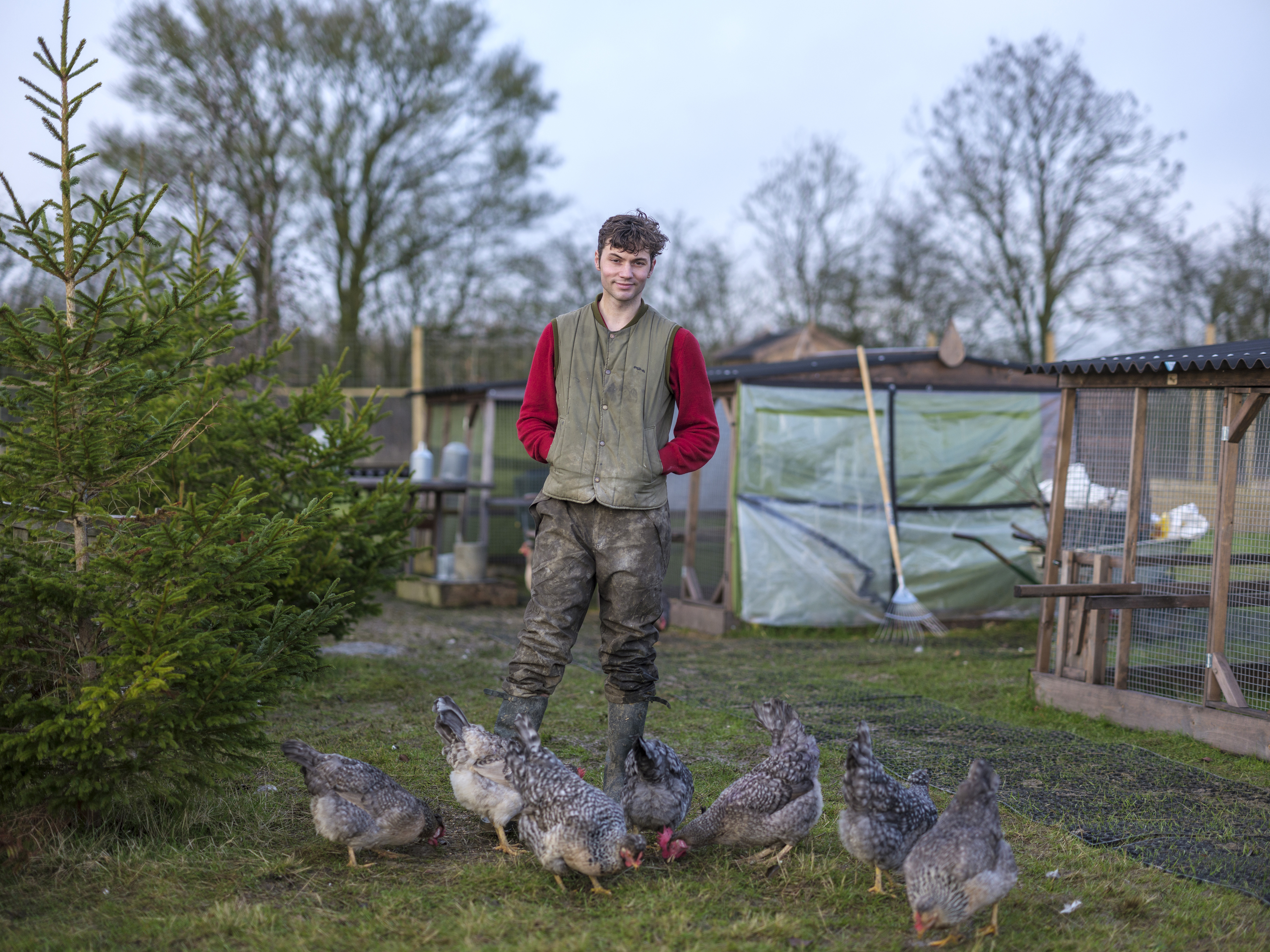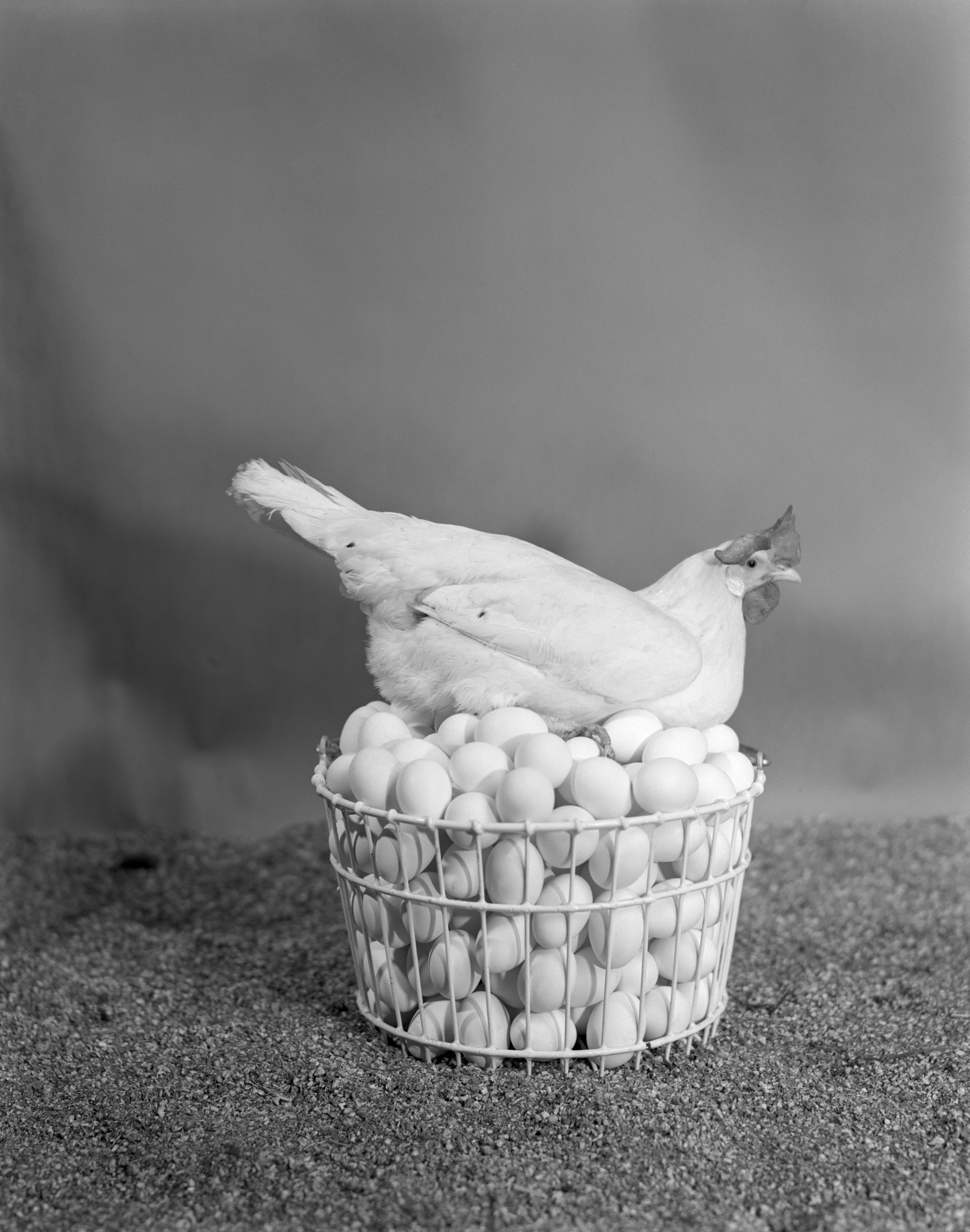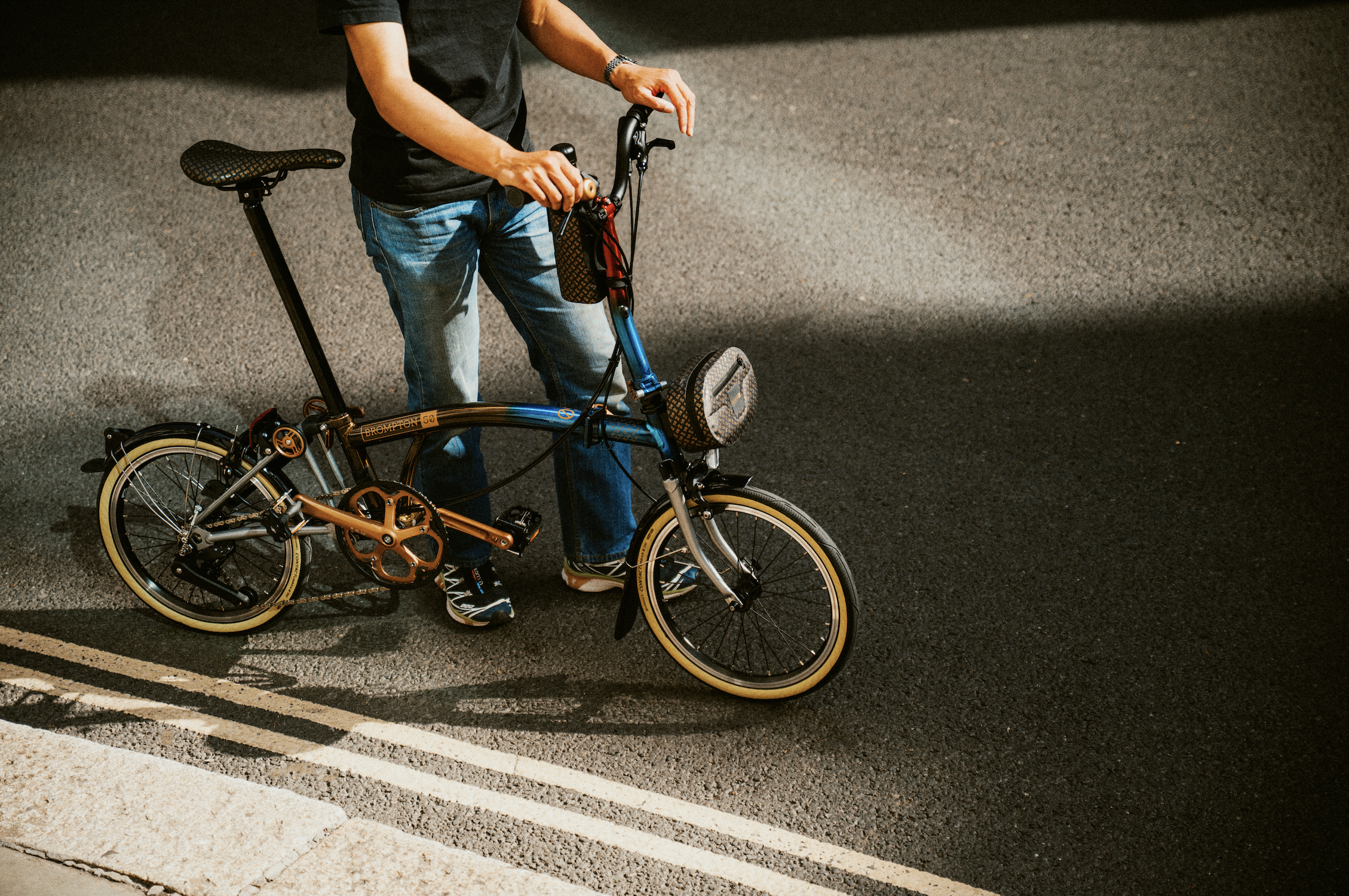Arthur Parkinson: Ruffled feathers and a bad attitude — my guide on how to deal with broody hens
A chicken's desire to sit on and hatch a clutch of eggs can be the most effortless way to rear your own birds, but for those who are after eggs and not chicks it can be a real issue.


An often overlooked consideration when one is choosing a breed of hen is the extent of their natural inclination to sit on a clutch of eggs.
Beatrix Potter summarised the challenges of brooding with her tale of Jemima Puddle-Duck, a farmyard victim who was ousted from caring for her own eggs thanks to the more trusted sitting capabilities of a hen. Indeed, ducks do make for poor sitters, while good broody hens will happily sit firmly for an extra week to result in a happy brood (duck eggs take 28 days, while hen eggs take just 21 to hatch).
Broodiness, or ‘going broody’, is a hen’s desire to sit on and hatch a clutch of eggs. For those wishing to increase their numbers of laying birds annually, hatching at home using a broody hen is the most natural, bio-secure and, arguably, effortless way to rear your own birds — minus the issue of the often resultant spare cockerels, who obviously can't be used for laying. However, for keepers with limited space, who want hens to lay rather than sit on eggs, broody hens can be a real and stubborn bore. So, why do hens ‘go broody’ and how can you discourage it from happening?
A hen’s broody hormones usually set in during the late spring and summer months when the long daylight hours naturally encourage them. An old wives tale is that hens will be encouraged to go broody due to the presence of a cockerel — this is not true. Just as they will lay eggs, hens will go broody with or without the presence of male company.

The question of how to spot one is simple. A broody hen is a hen who refuses to leave the nesting box. They will be found either hoarding all the eggs that have been laid that day, or, if they are really serious about sitting, they will sit absent mindedly on nothing — keeping the nesting box litter warm. They will be alert to your interference, fluffing up their feathers and clucking at you in a most disgruntled manner.
A broody hen won’t lay more eggs as, in their mind, they have already laid a clutch to sit on. However, you will likely have collected these eggs in the weeks leading up to them now deciding to commence their sitting, therefore they will consider eggs being laid by the other hens to be their own. Naturally, they will then become disgruntled at any interruptions to their sitting from their laying sisters.
All hens have different temperaments when they go broody. The best are very docile, while others become grumpy little terrors who sharply peck your hands, so it is well worth wearing a pair of gardening gloves and a long sleeved jumper to prevent hole puncher-like peck marks, just in case.
Exquisite houses, the beauty of Nature, and how to get the most from your life, straight to your inbox.

Sometimes the urge to brood can get out of control.
If eggs are not collected promptly from the nesting boxes this will encourage broodiness further. If you are away for a few days it is well worth asking someone to collect the eggs for you, as uncollected eggs will silently beckon the hens to consider sitting on them. Roll-away nesting boxes, designed with felted floors set on a slight slant so that the eggs cunningly roll down into a tray — making them inaccessible and out of sight of the hens — are useful if eggs cannot be collected often.
Modern hybrid hens have had broodiness deliberately bred out of them. Unfortunately, all the fancy, feather-footed breeds such as Pekin bantams, silkies and Orpingtons still usually fall broody each summer, which can lead to neglect if new owners do not realise that they need to be encouraged away from the urge rather than being allowed to endlessly sit. The reason for this is that broody hens go into quite an incredible fast-like state and, in the process, lose a lot of their body weight, especially if they are not taken out of their nesting boxes once a day to ensure they drink, feed and relieve themselves. Hens are quite remarkable at saving up all their droppings when they are sitting on eggs. A hen who has been sitting will produce the most remarkably large and stinking compressed pellet that can be trowelled up and taken to the compost heap.
Often, however, repeatedly taking an unwanted broody hen out of the nesting box only sees them return within the half hour, and their temper continue to rise. Such stubbornness requires placing the hen in a wire cat carrier or finely meshed dog crate for a short while. It sounds like something from the Victorian era, but it is honestly for the best.
The crate should be placed on some bricks so that the hen can feel the cool air under them and feed and water should be provided in heavy bowls. Do not be tempted to let your broody hen out from their little ‘cooling down’ crate until at least a full week has passed. If you relent and do, she will return to the nesting box with renewed vigour. It is best to place the hens in their crates somewhere secure and busy, such as a cool potting shed. In my case, as I write this, I have a very angry, fluffed up guest judging my work from their kitchen table.
Arthur Parkinson writes a monthly column about chickens for Country Life Online. You can find all of his other scribbles here.
Arthur Parkinson is a gardener, writer and broadcaster. He trained at the Royal Botanical Gardens, Kew before working for Sarah Raven and as the head gardener at the Emma Bridgewater factory garden. He is the author of four books including 'Flower Yard: Growing Flamboyant Flowers in Containers'.
-
 This Grade I Essex home was renovated by a Guinness and a notorious American diarist and photographed by Country Life — now it's a firm favourite with the fashion set
This Grade I Essex home was renovated by a Guinness and a notorious American diarist and photographed by Country Life — now it's a firm favourite with the fashion setKelvedon Hall was saved from demolition by Lady Honor Guinness and Henry 'Chips' Channon. Now it is the star of a Church's Christmas campaign.
-
 What is everyone talking about this week: Thanks to modern-day technology, people were far happier in the days when Nero was setting Rome ablaze
What is everyone talking about this week: Thanks to modern-day technology, people were far happier in the days when Nero was setting Rome ablazeWas the ancient world's superior happiness down to its ‘superior production of art’?
-
 The golden retriever: The world’s most likeable dog almost didn’t exist at all
The golden retriever: The world’s most likeable dog almost didn’t exist at allThey’ve been popping up everywhere this week — on the Tube, at Christmas parties and in the news — so it feels like the perfect moment to talk about the dog breed we’re lucky to have.
-
 In search of London’s earliest pint
In search of London’s earliest pintEarly houses — pubs open in the early hours to feed and water the market trade — have been a cornerstone of London for centuries. Yet, as Will Hosie finds, they aren’t stuck in the past.
-
 Aristotle believed they emerged spontaneously from mud, Sigmund Freud dissected thousands of them and they can dive lower than a nuclear submarine — but what is the truth about the eel?
Aristotle believed they emerged spontaneously from mud, Sigmund Freud dissected thousands of them and they can dive lower than a nuclear submarine — but what is the truth about the eel?It would seem the European eel has a long way to go to win hearts, Laura Parker says of the slippery animal with an unfortunate image problem.
-
 The Alpine rescue dog built for blizzards, bred by monks
The Alpine rescue dog built for blizzards, bred by monksAs snow fell across the UK this week, I found myself day-dreaming of St Bernards striding through the Alps — a snow-day dog worth celebrating.
-
 Better than Ozempic? 50 years of the Brompton bicycle
Better than Ozempic? 50 years of the Brompton bicycleOwen Wilson, James May and most of the middle-aged men and condescending hipsters you know love them. As the iconic folding bike turns 50 Lotte Brundle hops on one with the company's CEO.
-
 No more froths, no more foams, no more tweezers. Classic dining is making a comeback. Thank god
No more froths, no more foams, no more tweezers. Classic dining is making a comeback. Thank godFrom prawn cocktail and Arctic roll to starched tablecloths and ‘nicotine cream’ on the walls, it’s out with the new and in with the old in the restaurant world
-
 'It is hard to beat the excitement of watching a peregrine you have trained stoop from 1,000ft, going more than 100mph' — the complicated world of falconry
'It is hard to beat the excitement of watching a peregrine you have trained stoop from 1,000ft, going more than 100mph' — the complicated world of falconryA combination of spellbinding sport and profound empathetic connection, falconry–a partnership in which the bird maintains the upper hand–offers a window into ‘the deeper magic’.
-
 What is everyone talking about this week: More than half the country owns a pet and nearly half our marriages end in divorce — no wonder pet-nups are on the rise
What is everyone talking about this week: More than half the country owns a pet and nearly half our marriages end in divorce — no wonder pet-nups are on the risePet-nups, a formal agreement between couples over what should happen to their pets in the event of a split, are on the rise.
